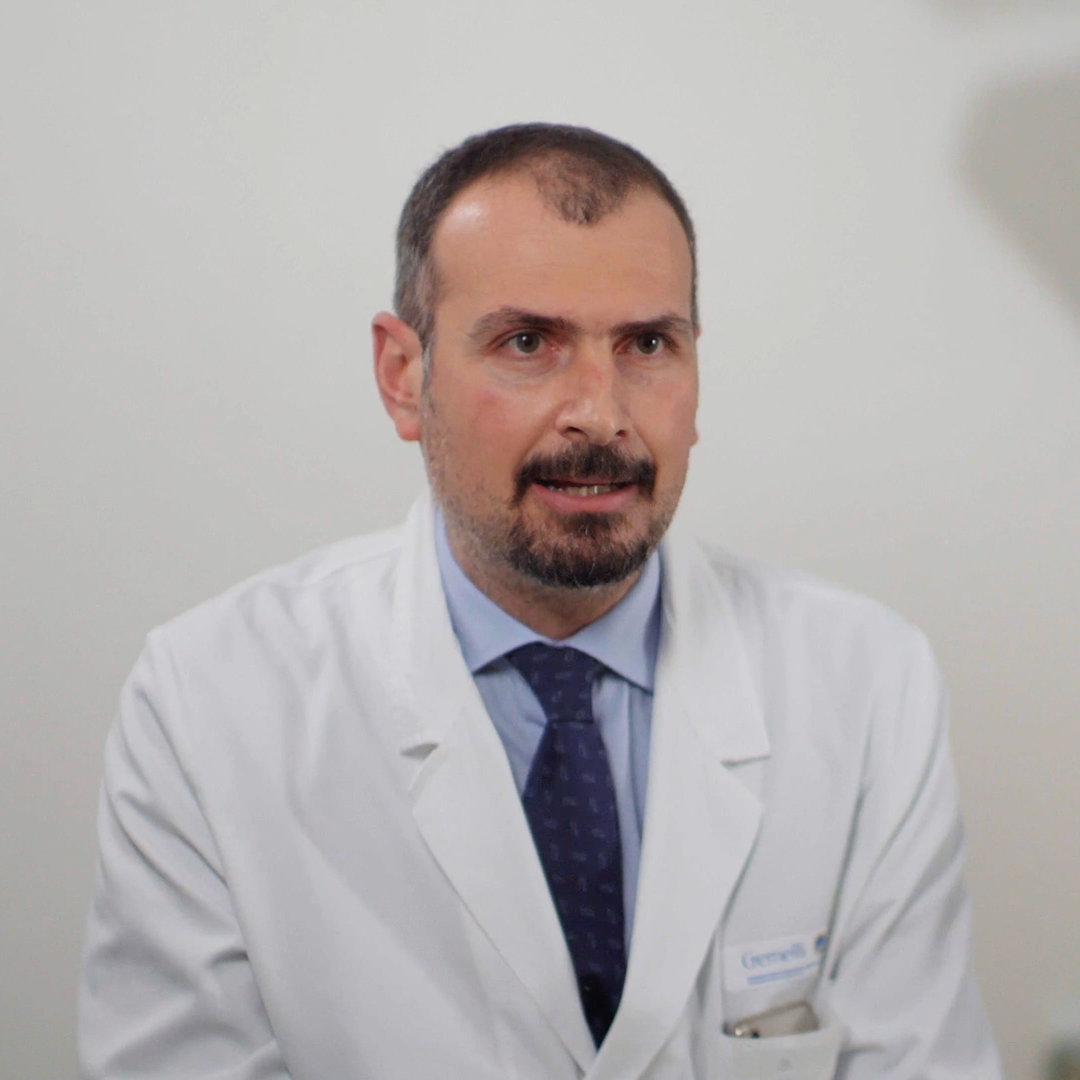
Expert Healthcare Perspective On Brachytherapy Treatment
Healthcare Perspective
Dr Luca Tagliaferri
Being diagnosed with cancer can be scary for you and your loved ones, and you may be overwhelmed with information and choices. We're here to provide answers to questions about brachytherapy, with a variety of perspectives. This video is part of a series by doctors, nurses, radiologists and other health care professionals to help improve understanding of what brachytherapy is and how it can help treat your cancer.
To help patients and their families understand more about brachytherapy, Dr. Luca Tagliaferri, a physician from Fondazione Policlinico Universitario “Agostino Gemelli” IRCCS in Rome, recorded this video. He explains what brachytherapy is compared to other radiation treatments, its benefits and how it can accurately deliver a high radiation dose while sparing the surrounding healthy tissues.

What is Brachytherapy treatment?
Brachytherapy is a type of radiation therapy which places a small amount of radioactive material in the body on or near the cancer cells. There are different types of radioactive sources or implants used for the radiation therapy which contain different amounts and strengths of radioactive material. These radiotherapy implants are often seeds, wires or discs which enable your doctor to ensure that there is minimal exposure to healthy tissue.
Brachytherapy: the radiotherapy from inside the body
Brachytherapy, also called internal radiotherapy or interventional radiotherapy, is one of the best options that modern oncological radiotherapy has to offer.
There are three main types of radiotherapy treatments.
External Beam Radiation Therapy
Beams of radiation are delivered from a distant source, through devices moving around the patient. It directs the radiation to the tumor location and can be used to treat large areas of the body.
However, external beam radiation therapy can expose healthy cells to radiation which can damage healthy tissue. For widespread cancer, this may be the best option, but for smaller tumors or localized cancer, brachytherapy enables radiation therapy to treat cancer in a very targeted way.
Metabolic Radiotherapy
Radiopharmaceuticals are introduced into the body either orally or by intravenous injections and will act selectively on the tumor, destroying the malignant cells without damaging the surrounding healthy tissues.
Brachytherapy
Brachytherapy is a procedure during which radioactive materials are placed permanently or temporarily, inside the body through special delivery devices called applicators. Brachytherapy allows for delivering a high radiation dose precisely at the tumor’s site, decreasing the radiation to surrounding organs.

How brachytherapy works
The therapy consists of placing a radiation source (or sources) directly in or next to the tumor inside the body to kill cancer cells. In the case of prostate cancer, the implant will be placed next to the cancer cells in the prostate to treat prostate cancer.
Internal radiation therapy involves the use of applicators which can take many forms, including; catheters, needles, cylinders, tubes, balloon systems, and more, depending on the treatment plan. For example, for gynecological cancers, there are applicators that go inside the uterus.
These applicators are hollow and once they are perfectly positioned, the radioactive material is placed through them to irradiate the tumor.
By providing a high dose rate brachytherapy to the target tumor site, we increase the chances of controlling the tumor and stopping the cancerous cells from growing. The treatment minimizes the dose to the surrounding healthy organs, with a noticeable reduction of side effects, compared to external radiotherapy.
Brachytherapy can be used alone or with other cancer treatments like external radiation or hormone therapy.
A therapy of high precision
Real-time imaging techniques, such as CT scans and ultrasounds, are used during the brachytherapy procedure. The applicators are positioned with extreme precision to the target site. When the applicators are Magnetic Resonance Imaging (MRI) compatible, MRI imaging can also be used. This specific technique is called image-guided brachytherapy. It offers the patient high-accuracy therapy and can increase the treatment success rate.
Additionally, intensity-modulated brachytherapy is a treatment of high precision that involves the use of remote after loaders.
The advantages of Brachytherapy
- Higher dose delivered
Intensity-modulated and image-guided brachytherapy enables a higher dose of radiation than what is possible with conventional external radiation treatments.
- Fewer side effects
By delivering radiation precisely to the targeted area, the brachytherapy procedure reduces the radiation to the healthy organs and thus decreases their related side effects.
- Treat smaller areas
Because the radiation source is very close to the tumor, the irradiation affects only a very localized area, reducing the dose for healthy tissue nearby.
Shorter time of treatment
Since a larger dose of radiation can be safely delivered at one time, the overall treatment time can be shorter. With brachytherapy, patients also typically make fewer visits to the radiotherapy clinic compared with external beam radiation therapy.
Why brachytherapy is an essential option for patients
Brachytherapy is a very successful treatment option to treat many different tumors. With precise high doses of radiation that preserve the surrounding healthy tissue, it increases the probability of tumor control with fewer side effects. Brachytherapy offers patients shorter treatment durations overall, and in his recording, Dr. Luca Tagliaferri talks about the better quality of life for his patients following the procedure.
About Dr. Luca Tagliaferri
Luca Tagliaferri graduated in Medicine in 2004 at the School of Medicine of the “Università Cattolica del Sacro Cuore” of Rome and completed his residency program in radiation oncology in 2008, followed by PhD in brachytherapy in 2016. Dr Tagliaferri currently works at the Gemelli ART (Advanced Radiation Therapy) Center of the Gemelli University Hospital of Rome, addressing his clinical and research interests, especially in interventional and metabolic radiotherapy.
